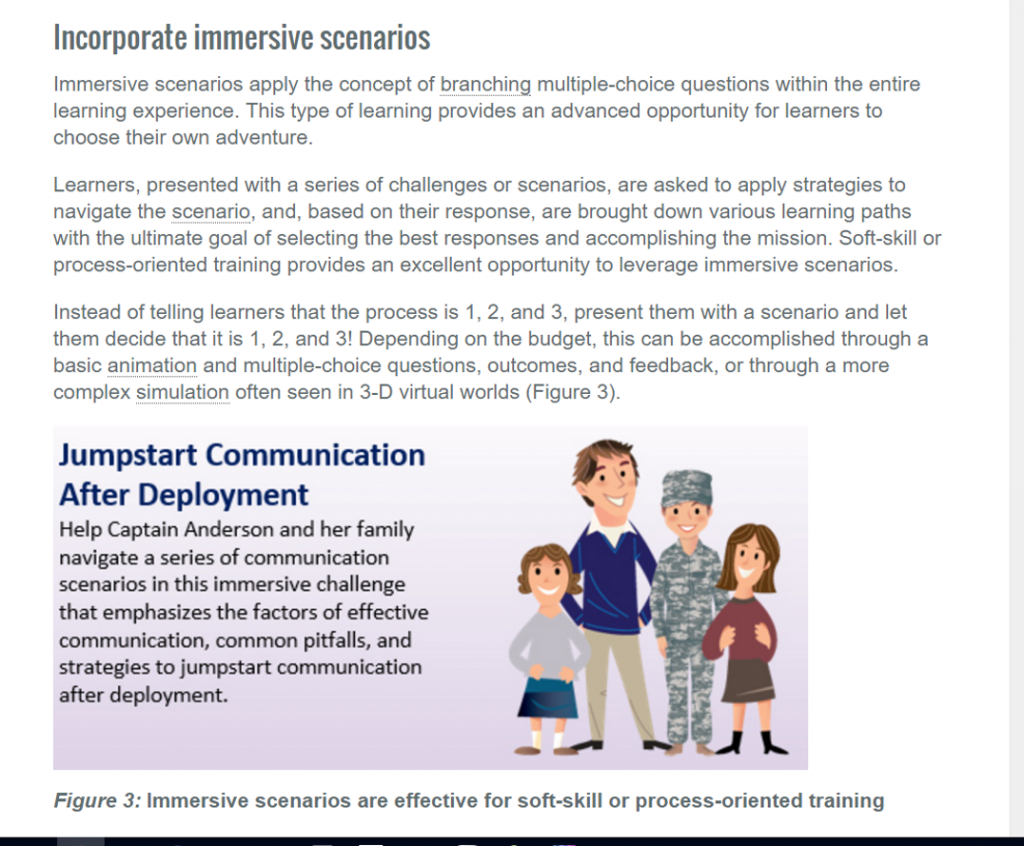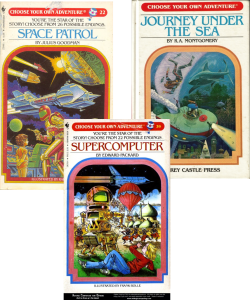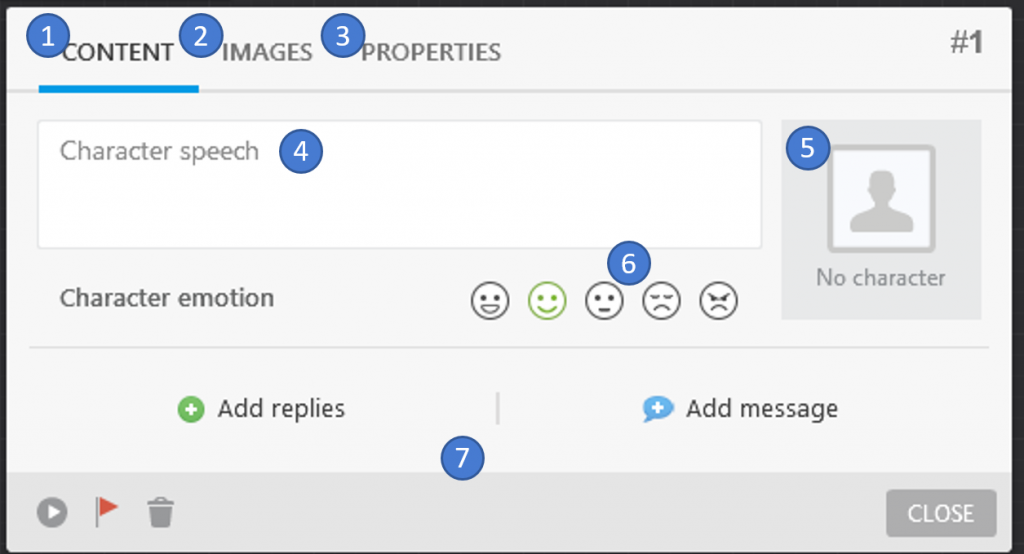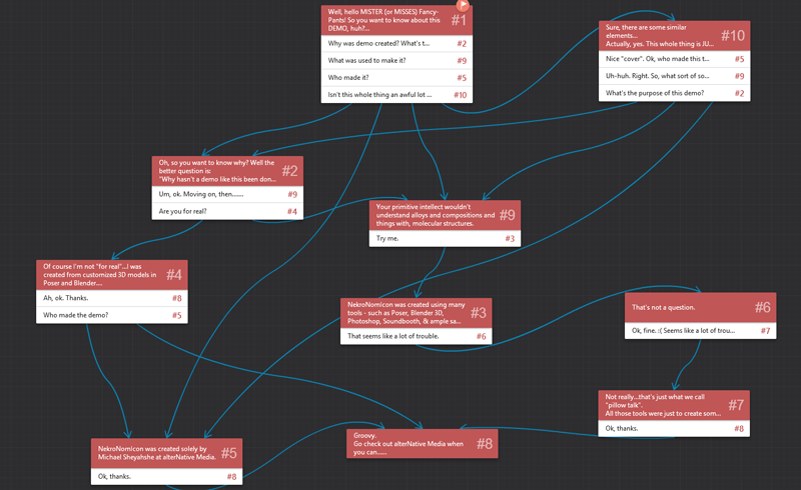Familiar Faces and New Experiences
DevLearn is always fantastic – I come back from the eLearning Guild conferences invigorated and inspired by the innovation and expertise I encounter there. This year, DevLearn 2016 at MGM Grand in Las Vegas, NV was no different.
This year, however, was a new experience for me: while I normally present general sessions or the deeper-dive, B.Y.O.L. sessions, this was my first time presenting at one of the “Learning Stages”. These Stage sessions are shorter in length, have more traffic, and are located within the main Exhibition Hall. The good people at iSpring invited both me and Mark Simon to speak about their eLearning authoring tool.
My talk on creating branching scenarios using iSpring’s TalkMaster was located at the “Innovation Showcase” Learning Stage.
At the Innovation Showcase stage you’ll delve into innovation in action and view examples of technologies and approaches being used in novel, imaginative ways.
Despite a brief technical hiccup my laptop decided to have at the start of my show, I rallied-on and was able to start more-or-less on-time. I had a good turn-out and finished strong, able to field several questions from the audience.
Below is a brief outline of my session’s highlights:
Master the Possibilities with iSpring TalkMaster

Branching

Why do we eLearning people talk so much about the importance of branching scenarios? Sure, it makes us sound cool…but more than that, branching scenarios benefit our learners. Due to the decision process involved, branching enhance learner experience by directly including them in the structural decision-tree. This enhancement, coupled with good content, strengthens training models traditionally presented in linear formats.
Branching – Research

Article on learner engagement from eLearning GuildThe eLearning Guild provides a wealth of knowledge, insight, and research on why branching works and how to best implement it. One such article grabbed my attention. In her article, “Six Instructional Design Tips for Learner Engagement“, Jacqueline Bessette outlines:
Immersive scenarios apply the concept of branching multiple-choice questions within the entire learning experience. This type of learning provides an advanced opportunity for learners to choose their own adventure.
[Emphasis mine.] Keep that last part in mind. We’ll come back to it in a moment.
Why iSpring ?
While there are lot of goodies to use, the TalkMaster Simulation tool stands out for a number of reason. While there are other ways to achieve branching with iSpring, TalkMaster is fantastically easy to create customized and very polished branching scenarios. Additionally, as we’ll see in a moment, TalkMaster leverages many ready-made assets to use, right out-of-the-box.
Of course, iSpring makes publishing content easy. The TalkMaster Simulations published to HTML5 look good and ‘play nicely’ with most all devices. Of course, you can publish to LMS, just as easily.
TalkMaster really shines in its flexible use. Further down, I’ve included some examples of final products made with TalkMaster including: a Sales trainer, FAQs, and Customer Service.
Plus..! {Reasons to UPDATE}

Always check the updates. Just before my show, I noticed some available updates for my iSpring suite. Here are the goodies specifically for TalkMaster that I got to tell everyone about at DevLearn. At the time of writing, a new update allows TalkMaster to:
- send score to email or server
- send results to learners’ emails
- actions on simulation finish
- hyperlinks within simulations
- spell checker
Branching as Experience

TalkMaster allows a very easy way to create “Choose You Own Adventure”-type of interactions. For those that remember what these books were, you know why I bring them up in relation to branching scenarios. For those that don’t have a clue what these books are, here’s a brief primer: each book encapsulated a story experience, as you (the reader) controlled the narrative plot-points.
Example: What do you do now? To choose option A, turn to page 63. To choose option B, turn to page 13.
As an eLearning professional, I continually advocate this time of experiential content, rather than the usual “Page-Turner” content we’re continually plagued with (creating and taking). Using TalkMaster to create polished branching scenarios, the learner’s experience becomes the main learning goal.
TalkMaster Examples

So enough about that – let’s take a look at some showcase pieces created with iSpring’s TalkMaster (NOTE: links below opens new tabs or windows).
First, a Sales trainer . Next, a training scenario for Customer Service. And finally, a custom FAQ – one I created for my HTML5 project at the Focus on Learning DemoFest 2016. (You can access this article on my blog, “The Technology of Learning” – http://instructional-design-specialist.blogspot.com/2016/06/lessons-learned-focus-on-learning.html.)
Customizing the Scene

Getting down to nuts-and-bolts, my session provided insight on customizing the scenes inside TalkMaster. You can customize the following elements of the scene:
- Content
- Main control area
- Add initial background / intro text
- Images
- Several built-in character images to choose from
- These correlate with Emotion (#6 below)
- Built-in background images to choose from
- Or you can can add your own
- Properties
- Here, you can sets scene color scheme
- Speech
- Main messages for each scene
- Character Image
- Each scene can have its own character image
- Use choices from Images section
- Emotion
- Each scene can have emotional markers
- Built-in characters show these
- As well as emotion indicator (discussed later)
- Replies/Message
- These link to other scenes
- Replies can be different on-screen choices
- Messages give more text info
- Each is node-based
Wait…What does node-based mean?
Node-based editing, is a term borrowed from image compositing (among other technical disciplines). Basically, it refers to a way to visually plug in values from one node to another, during the editing or creation process.
TalkMaster Nodes

…just like this. TalkMaster allows creation and editing of scenes by visually connecting one scene to another.
Voice Over Options

As mentioned earlier, a recent update to iSpring’s TalkMaster now allows for content enrichment by adding audio files. In the Voice Over section, you can now:
- Record audio
- Import existing audio file
- Edit (if audio exists/has been created)
- Delete
- Export script to text file
- Go back a scene
- Go back to starting scene
- Preview with audio
Learner Centric Outcomes
For me, it’s all about the learner, no matter what tool or cool tech I’m discussing. With that in mind, I closed my session by encouraging us to consider the following key elements when creating eLearning:
- Focus on learner interest or experience, rather than content “objectives”
- Allow learner a sense of control
- Make experience as robust as possible
- Decide if learner can restart and/or skip
- [If you create branching,] Create several possible outcomes
- Use quality audio and only use when appropriate, supporting content
The rest is gravy. Cheers!

Hello everyone!
You are welcome to watch the video recording of Michael’s session on the iSpring YouTube channel: https://www.youtube.com/watch?v=2SVkgA52OWA